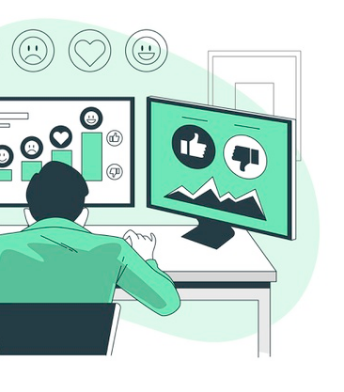Text Analysis Innovation with NLP
Natural Language Processing (NLP) can be described as a field of computer science and artificial intelligence that provides computers with the ability to interact with human language. It is concerned with human-to-machine communications that allow processing and analysis of large amounts of natural human language data.
According to Fortune Business Insights, the global NLP market is projected to grow from $20.98 billion in 2021 to $127.26 billion in 2028 at a Compound Annual Growth Rate (CAGR) of 29.4% in the forecast period. The impact of Covid-19 has further contributed to a steady rise owing to its market demands and growth, particularly for big data technology.
NLP applications have increased tremendously over the last few decades. From chatbots to social media monitoring, survey analysis, advertising, voice assistants, grammar checkers, advanced NLP technology can resolve the diversity and complexity of everyday human language. It adds a numeric structure to unstructured data for several downstream applications like text analytics and speech recognition.
Here are some possibilities of the future of NLP applications:
1. In the Healthcare Industry: Many data scientists predict that with the help of NLP, healthcare AI solutions will be able to understand medical terminologies and retrieve relevant medical information from the most reputable sources in real-time. Along with this, the AI system will also provide diagnostic assistance, image classification and report generation. These NLP capabilities can be extended to create intelligent healthcare AI assistants which will understand conversations using Natural Language Understanding (NLU) models with medical vocabulary and data.
2. Enhancing Customer Service: Advanced NLP technologies will analyse voice calls and emails for gauging customer satisfaction, prevalent problem topics, sentiment analysis, etc. Using clustering in NLP for vast information search, businesses can find out relevant patterns in the problem topics and track major concerns among customers. Further, these technologies could provide customer service agents with a readily available script relevant to the customer's problem. The system will simply "listen" to the topics being addressed and match that information with the customer's record. This will enable customer service agents to optimise their communication with customers by saving massive amounts of time.
3. In Automotive Industries: Automotive is a fast-moving consumer tech industry, and car OEMs are evolving rapidly. Cars will be frequently used as autonomous robots whose transportation capabilities will be expanded with other onboard computational capabilities and sensors. In 2018, Amazon had announced that BMW would integrate Alexa into their vehicles, giving drivers access to their Alexa from their cars through simple voice commands. The intelligence application is vast in this industry, and researchers are already paving the way for better machines and integrations.
4. To support invisible UI systems: With technologies like Amazon's Echo, the concept of an invisible or zero user interface has evolved. In the future, we can expect direct interactions between the user and the machine through voice, text or a combination of the two. The technology will provide a greater contextual understanding of the human language, irrespective of its complexity or diversity. Invisible UI systems are an integral part of the future of NLP as they will affect our daily usage and interaction with technology.
5. To enable intelligent search: Rather than focusing on keywords and topics, a search will be based on complete speech recognition. Users will be able to search extensively via voice commands rather than typing or using specific keywords. NLP systems will increasingly use object and image classification techniques to help users search, using images.
6. Better intelligence from unstructured information: Advanced NLP in text analytics is one of the major transformations in AI and computer science. It has enabled organizations to extract valuable knowledge and insights by accurately understanding the subtleties of language. In the future, this technology will be beneficial for producing annual reports, call transcripts and other investor-sensitive communications, legal and compliance documents. The use of NLP applications will be widespread across industries.
7. Human-like virtual assistants: Virtual assistants will become better at understanding and responding to complex and long-form natural language requests, which use conversational language, in real-time. These assistants will converse more like humans, taking notes during dictation, analysing complex requests and executing tasks in a single context, suggesting significant improvements to business documents, and much more.
According to scientists and data researchers, the future of NLP applications transcends beyond simple human-computer interaction. They predict an AI ecosystem that will be an integration of several interoperating AI systems. Various voice-controlled NLP systems have already made their way into the market, including apps that control smart machines like thermostats, washing machines, pet monitoring systems, ovens, etc., from a phone or tablet.
With growing usage, we can expect massive changes as NLP technologies become more mainstream. There will be an increase in the deployment of enterprise AI across all departments of organisations, businesses including startups. NLP will be essential in understanding the authentic voice of the user and customer, facilitating more seamless interaction on any platform where language and human communications are used.
NLP has significantly changed how we interact with computers and will continue to do so in the years to come. AI technologies will be the primary force for transformation from data-driven to intelligence-driven endeavours as they develop and enhance communication technology.
